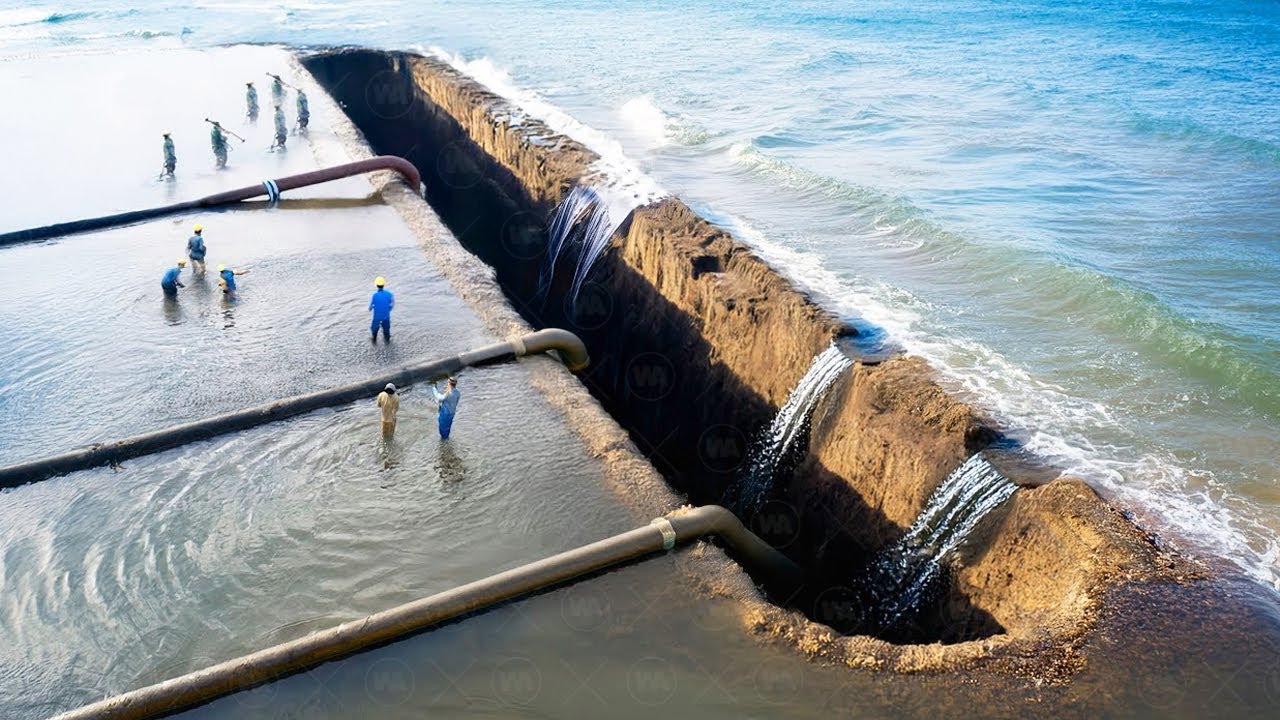They Started Pouring Billions of Liters of Water Out of the Desert, the Result Was Unbelievable

When people extract gas from coal seams, they pump groundwater to the surface and separate it. Much of this water is highly saline and cannot be used immediately and needs to be treated. The two main methods commonly used are reverse osmosis or evaporation in reservoirs. However, both of these methods create a large amount of salt waste – a difficult problem, because the amount of salt left behind is too large to be easily buried or discharged directly into the environment.
In Queensland, Australia, studies estimate that over the next 20-30 years, coal seam gas extraction could produce about 6 million tons of salt waste. Therefore, finding a solution to this problem is urgent. Fortunately, Australia has a specific plan to deal with this problem, and that is what we will discuss today.
### The Connection Between Gas, Coal, and Water
Coal seam gas is essentially natural gas trapped under pressure from groundwater. To extract it, wells are drilled into coal seams and the pressure is reduced by drawing groundwater. The water and gas are then sent to surface treatment plants. This water, called “co-produced water,” typically has a salinity of 0.1 to 3 ounces per gallon—higher than drinking water but much lower than seawater (1.2 ounces per gallon).
Approximately 18.4 billion gallons of water are extracted from the Surat Basin in Australia each year. Instead of going to waste, the treated water can be used for irrigation, livestock, industry, or added to local ecosystems. However, to do so, the water must be treated to remove the salt.
### Salt Waste and Treatment Methods
The most common method for desalination is reverse osmosis. However, this process only removes about 50% of the water, leaving a large amount of concentrated brine called “brine” – a waste product that has no use and is a potential environmental hazard.
Currently, brine is stored in reservoirs, but this is not a long-term solution. The accumulated salt does not decompose over time, and if it leaks into the environment, it can contaminate soil and groundwater.
Some solutions being studied include:
– **Commercial salt extraction**: Some of the minerals in the brine can be refined into industrial products such as sodium carbonate.
– **Injecting brine underground**: Similar to the method of storing oil in salt rock structures in the US, however, a suitable location has not been found in Australia.
– **Dump into the sea**: Some countries such as Spain, Israel and Chile have adopted this method, but it can affect marine ecosystems if not strictly controlled.
– **Bury in special landfills**: This is the option currently being implemented in Queensland, but requires constant monitoring to avoid water pollution.
### Controversies and challenges
The Australian government has approved plans to bury salt waste in Chinchilla, with a capacity of up to 15 million tonnes. However, many environmental experts warn that if these landfills leak, they could seriously pollute the Murray-Darling River system – an important water source for the whole region.
Scientists are continuing to research methods of reusing brine waste, including using it to neutralize acid mine tailings or to grow algae – a species that can thrive in saltwater environments and create high-value products.
### The future of brine disposal
While landfill remains the most viable option at present, the Australian government has committed to investing in research to find more sustainable solutions in the future. If successful, salt disposal could not only help the environment but also bring significant economic benefits.
What do you think of these solutions? Are there better ways to deal with salt waste in the gas industry?








